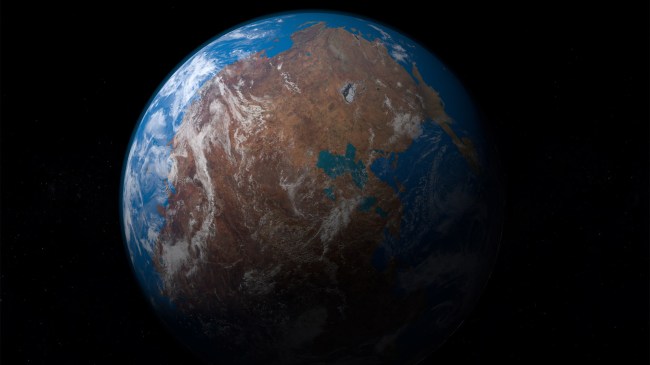
iStockphoto
Earth, it is believed, used to be covered with several supercontinents. Pangaea, made up of Gondwana and Laurasia, at one time was made up of the continents we all know today.
Then, about 200 million years ago, the supercontinent began to break apart, creating a very warm climate and extremely high sea levels.
The creation and breakup of supercontinents is believed to cyclical and has occurred multiple times over Earth’s history.
According to a study published in Nature Geoscience, scientists have determined when the next supercontinent will be formed.
Researchers from the University of Bristol, using hundreds of supercomputer simulations, believe that when the next supercontinent does form it will lead to such drastic changes to the planet’s climate that it will make Earth uninhabitable for humans.
“All life will eventually perish in a runaway greenhouse once absorbed solar radiation exceeds the emission of thermal radiation in several billions of years,” the study’s authors wrote. “Conditions rendering the Earth naturally inhospitable to mammals may develop sooner because of long-term processes linked to plate tectonics.”
The creation of this new supercontinent will lead to changes in volcanic rifting and outgassing, which in turn “will probably lead to a climate tipping point and [humans] mass extinction.”
Their simulations claim that once this new supercontinent is formed average temperatures on Earth could reach between 104 degrees Fahrenheit to 122 degrees Fahrenheit.
According to their calculations, this will all take place some time within the next 250 million years.
“Although mammals are resilient to temperature fluctuations, thermal tolerances are invariant across latitudes, elevation and phylogeny, showing that physiological constraints exist where survivability is limited,” the authors wrote.
“Sustained dry-bulb temperatures of >40°C [104 degrees Fahrenheit] can lead to mortality. Hyperthermia, a further upper limit, occurs when the ambient wet-bulb temperature exceeds approximately 35°C [95 degrees Fahrenheit], because the transfer of metabolic heat through sweat-based latent cooling is insufficient.”
The authors concluded, “No future scenario is predicted to remain habitable.”